Picture Books: Family, Kinship, And Community
The bonds of kinship, family, and community are often themes in the work of Native creators. Although individual tribal cultures are unique and distinct, they can share similarities, like a reverence for elders and ancestors, along with the importance of extended families and kinship networks. The picture books highlighted in this list explore the connections between children, their families, their ancestors, and their wider cultural communities.

You Hold Me Up
Author
Monique Gray Smith (Cree, Lakota, and Scottish)
Illustrator
Danielle Daniel (Algonquin)
Summary
This book highlights the many positive ways that people support one another within families and the larger community, such as sharing, singing, and playing together.
Author Monique Gray Smith wrote You Hold Me Up to prompt a dialogue among young people, their care providers, and educators about reconciliation and the importance of the connections children make with others. The book highlights the various ways family and community members can support one another and the final phrase, “We hold each other up” wraps up the book, showing family and friends sharing a multigenerational picnic.
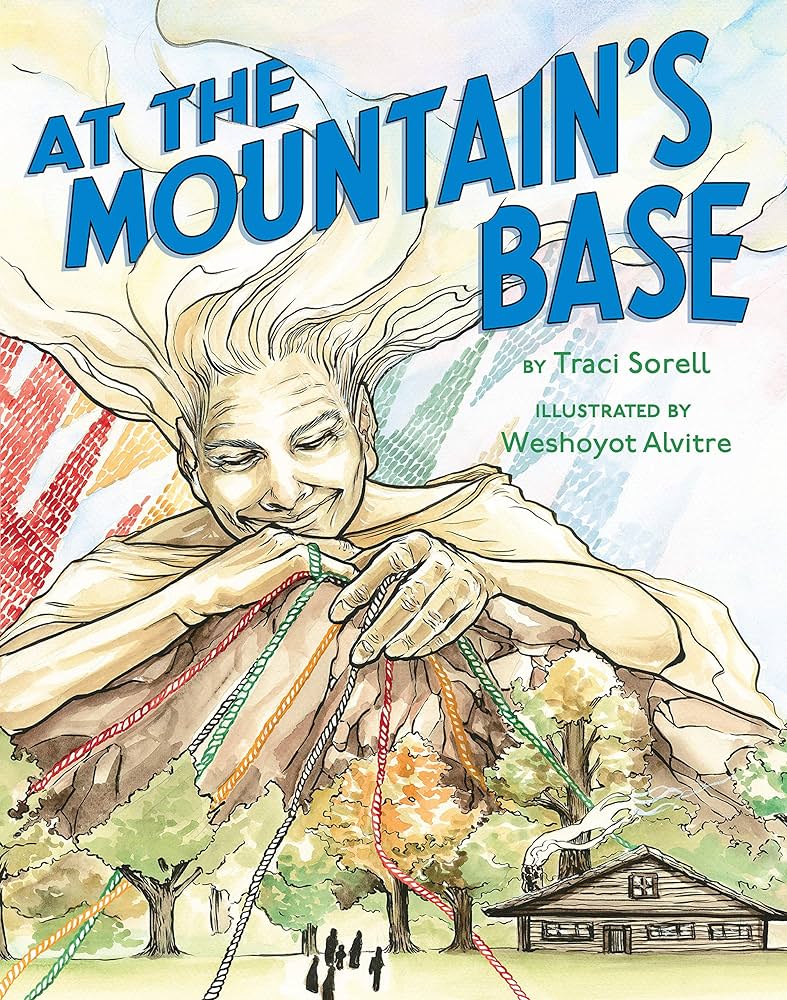
At The Mountain’s Base
Author
Traci Sorell (Cherokee Nation)
Illustrator
Weshoyot Alvitre (Tongva/Scots-Gaelic)
Summary
Inspired by the true story of Ola Mildred “Millie” Rexroat, a WWII Native woman pilot, this is the tale of a family, separated by duty and distance, waiting in their home at the base of a mountain for their loved one to return from war. We see both the family at home, comforting each other, and the pilot in her plane, hoping for peace and to be reunited with her family. The threads of the grandmother’s weaving link the family together in Alvitre’s illustrations.
In circular prose, the story shows the bonds between family members and the support they offer one another, and also celebrates the traditions (such as weaving and cooking) that sustain the family as they wait.
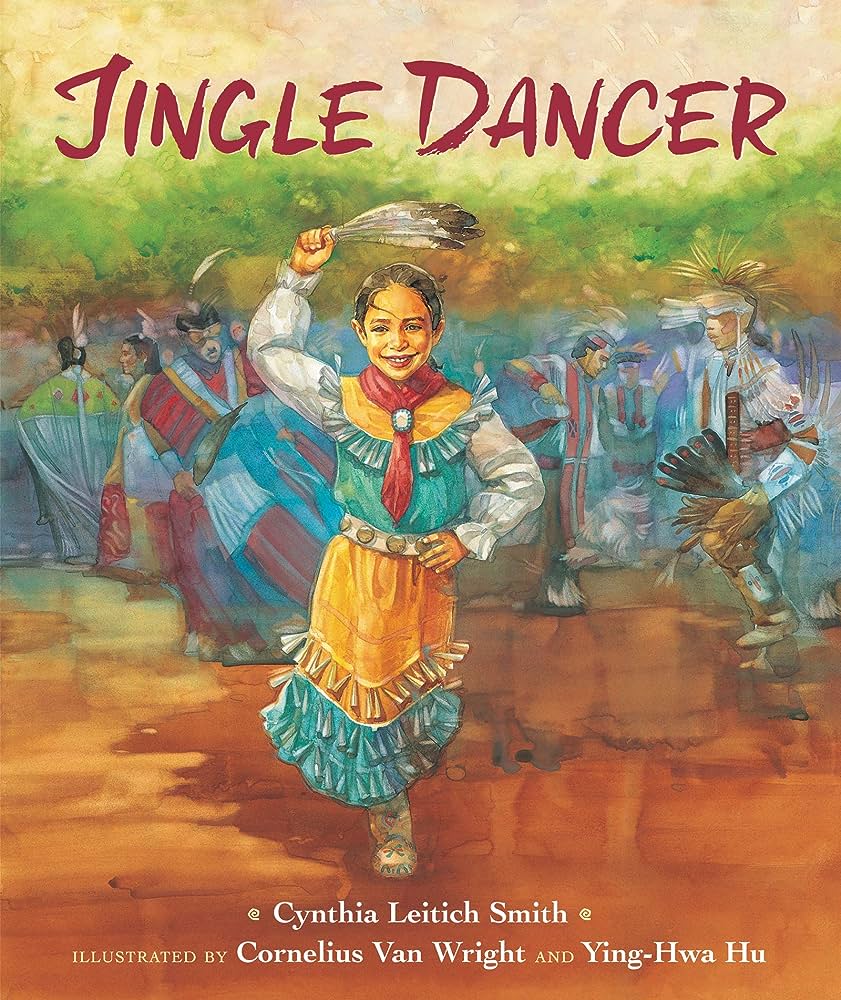
Jingle Dancer
Author
Cynthia Leitich-Smith (Muscogee Nation)
Illustrator
Cornelius Van Wright and Ying-Hwa Hu
Summary
This is the story of a contemporary Native American girl who turns to her family and community. Jenna loves the tradition of jingle dancing that has been shared over generations in her family and intertribal community. She hopes to dance at the next powwow, but with the day quickly approaching, she has a problem—how will her dress sing if it has no jingles? Jenna borrows one row of jingles from each of three dresses (her great-aunt’s, her older friend’s, and her cousin’s) so that her dress has what it needs and the other dresses can still have their own “voices”.
Jenna’s appreciation of and desire to be included in her community’s traditions is central to the story. Her extended family members work together so that she can participate by sharing some of their jingles for Jenna’s dress, and Jenna’s jingle dancing is her way of honoring them in return.
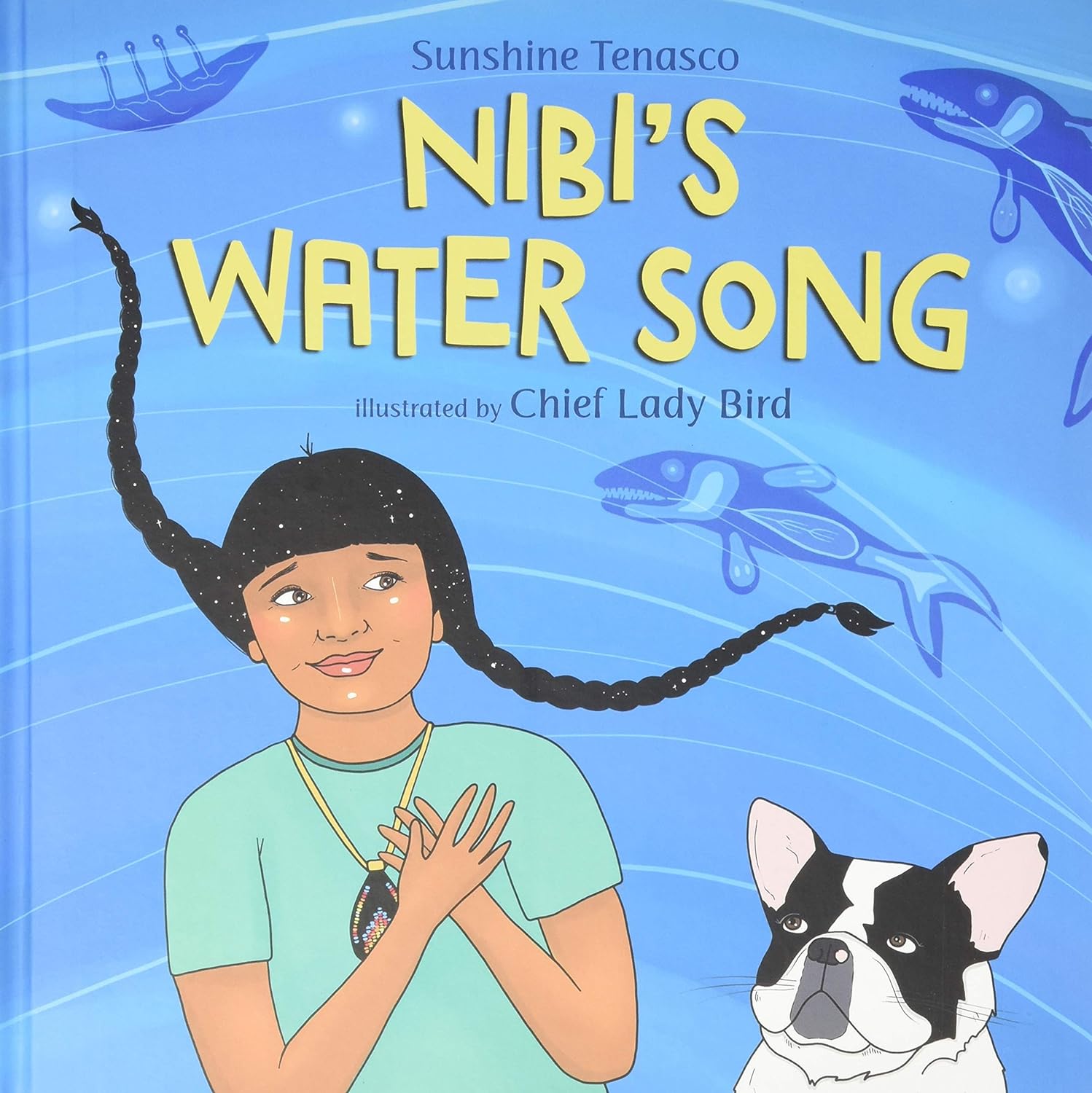
Nibi’s Water Song
Author
Sunshine Tenasco (Anishinabe)
Illustrator
Chief Lady Bird (Rama First Nation)
Summary
When Nibi, an Indigenous girl, turns the tap in her house, only mucky brown water comes out. That starts her on a search for clean water to drink. Though she must face polluted rivers, unfriendly neighbors, and her own temporary discouragement, Nibi’s joyful energy becomes a catalyst for change and action as her community rallies around her to make clean drinking water available for all.
Nibi’s journey to access clean water is borne out of her concern for her community, and she finds support from friends along the way. The story also highlights the ways in which all living beings are interconnected and affected by the health of the environment.
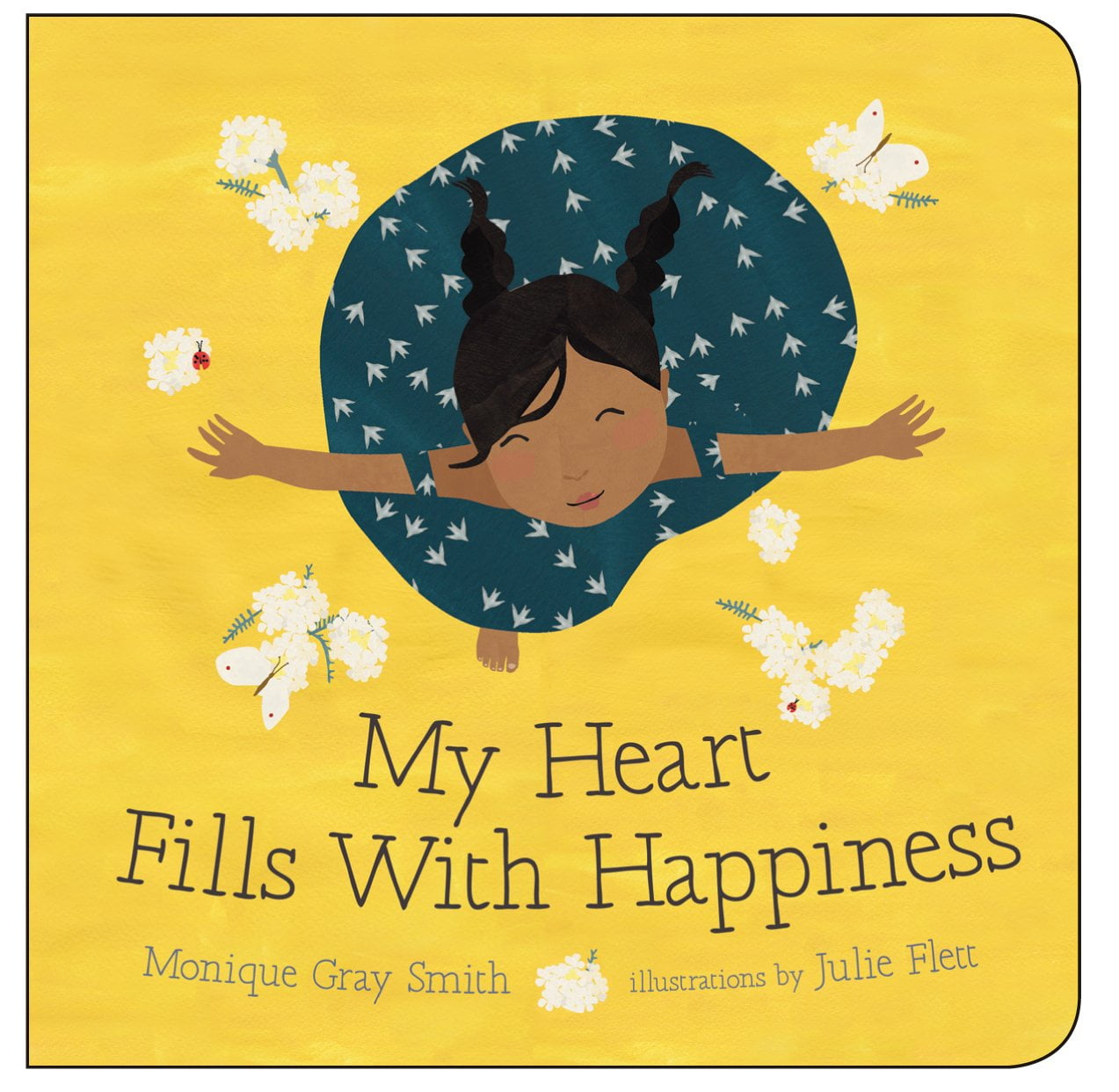
My Heart Fills With Happiness
Author
Monique Gray Smith (Cree, Lakota, and Scottish)
Illustrator
Julie Flett (Cree–Métis)
Summary
The sun on your face; the smell of warm bannock baking in the oven; holding the hand of someone you love. What fills your heart with happiness? This board book, with illustrations from artist Julie Flett, serves as a reminder for readers to reflect on and cherish the moments in life that bring us joy.
This book celebrates the different ways happiness is found through connections with our family and with our cultures.
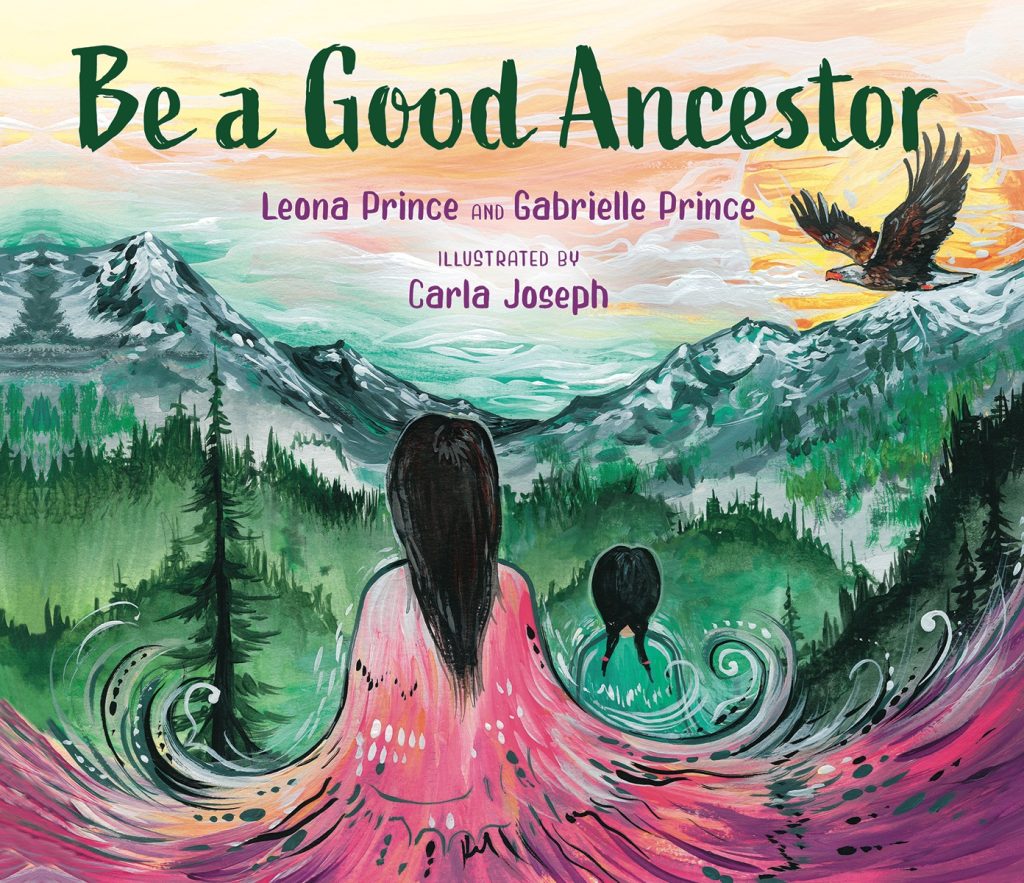
Be A Good Ancestor
Author
Leona Prince (Lake Babine Nation/Nak’azdli Whu’ten) and Gabrielle Prince (Lake Babine Nation/Nak’azdli Whu’ten)
Illustrator
Carla Joseph (Cree)
Summary
This picture book encourages readers of all ages to consider the ways in which they live in connection to the world around them and to think deeply about their behaviors. Addressing environmental issues, animal welfare, self-esteem and self-respect, and the importance of community, the authors deliver a universal message: be a good ancestor to the world around you.
The importance of community and the ways in which our actions have an effect on successive generations are a focus of the narrative.
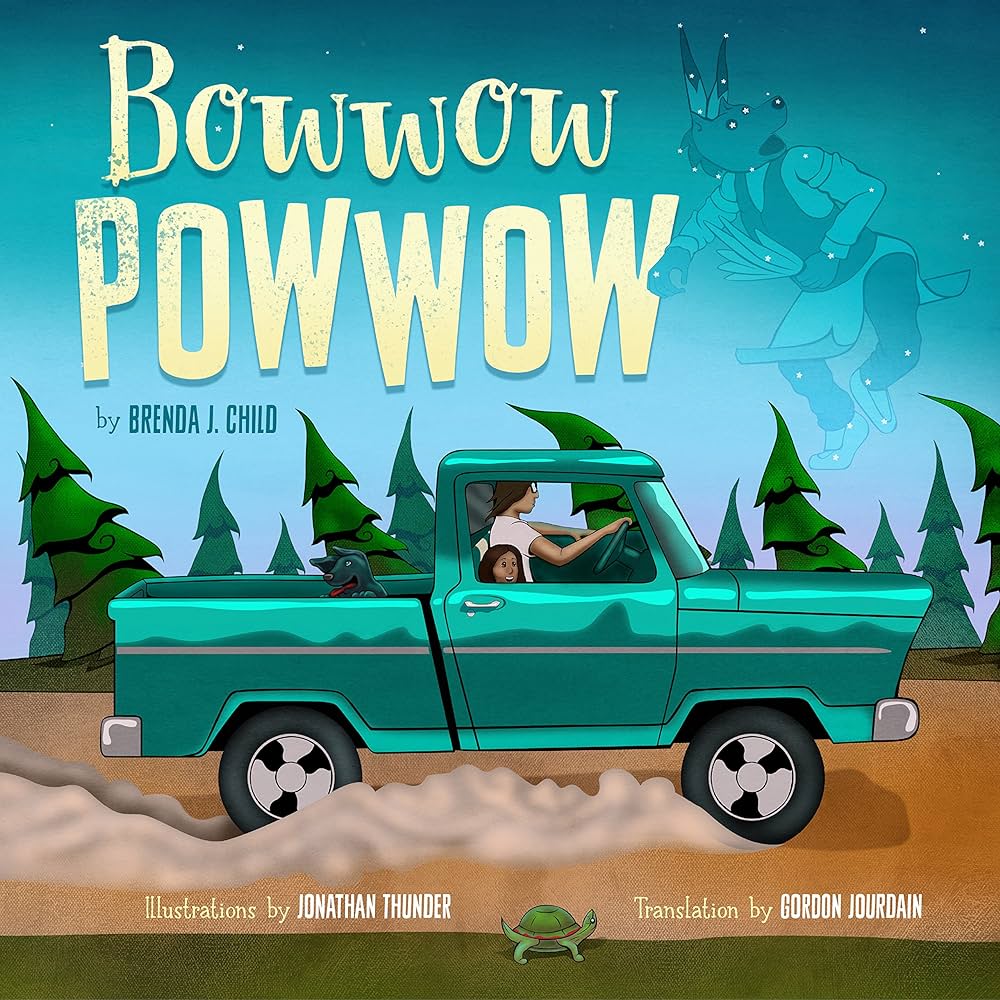
Bowwow Powwow
Author
Brenda J. Child (Ojibwe)
Illustrator
Jonathan Thunder (Red Lake Ojibwe)
Summary
The best days of summer end at the powwow, but Windy Girl takes the revelry of the gathering one step farther, into a dreamworld where the dancers and singers are dogs. Windy Girl is blessed with a vivid imagination. From Uncle she gathers stories of long-ago traditions, about dances and sharing and gratitude.
Uncle’s stories and Windy Girl’s dream adventure help her better understand the importance of the powwow in her culture.
Conclusion
These selections provide various avenues to explore the themes of family, kinship, and community via the work of contemporary Indigenous authors and illustrators. We hope that educators and readers alike will connect and come together with these stories.

About the Author
Andrea M. Page
Andrea M. Page (Hunkpapa Lakota) is a children’s author, educator and speaker. Her published book, Sioux Code Talkers of World War II (Pelican Publishing 2017), tells the story of seven Native American Code Talkers’ military service in the Pacific Theater. She also writes educator guides for publishers and works on projects for We Need Diverse Books.
Andrea serves as a Board member of the Children’s Literature Assembly (CLA) of the NCTE. She is a citizen of the Standing Rock Nation, and lives in Rochester, NY with her husband. Please visit www.WriterAndreaPage.com.
The WNDB team also contributed in compiling information for this list.

